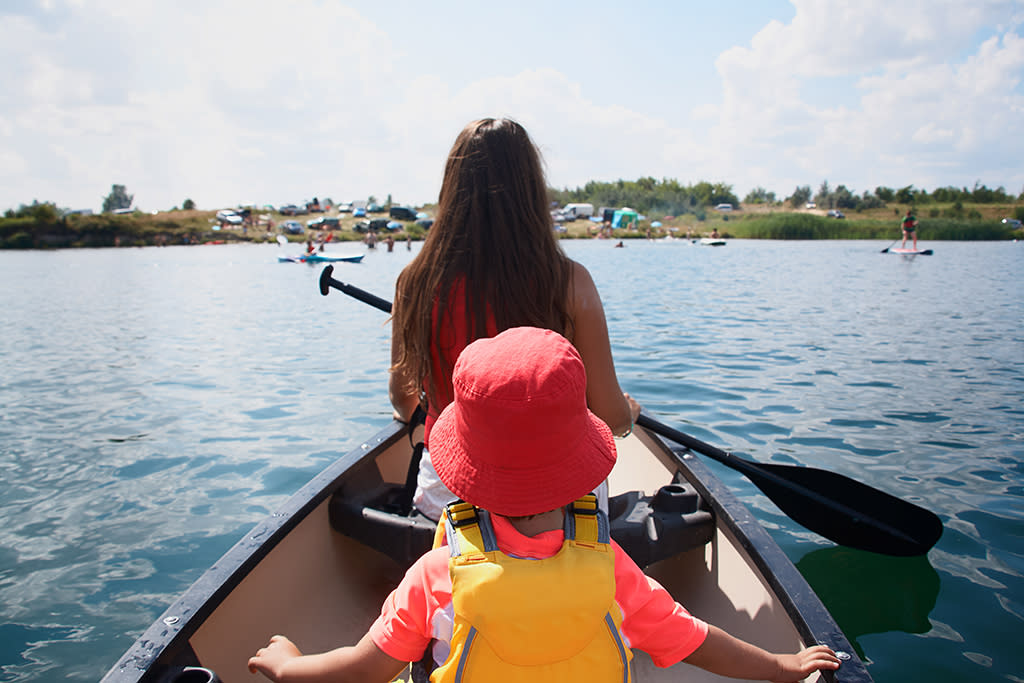Viral video that parents are madly sharing proves some life jackets are 'dangerous'

A grandmother in Washington state is warning people about a “dangerous” life jacket that she says almost caused her granddaughter to drown.
Holly Mueller shared a video on Facebook that’s now been viewed more than 21 million times that shows her granddaughter Marissa wearing a life jacket in the pool with Mueller’s husband, Daniel. When Daniel placed Marissa in the pool, she immediately rolled onto her stomach and her face was submerged in the water. He demonstrated this several times with the same result.
“Once again, if a child falls into a pool, it would roll them right onto their face,” Daniel says as Marissa is placed in the pool and again, flipped right onto her stomach. “Please do not use this life jacket, it is so very dangerous,” Holly captioned the video.
While plenty of people talked in the comments about how terrifying the video was, several others pointed out that the “life jacket” is actually a “buoyancy vest,” not an actual life jacket. “It’s not a LIFE JACKET PEOPLE IT’S A BUOYANCY VEST,” one person wrote.
It’s understandable that you might get the two confused, but they’re actually very different, according to First Class Sailing. A buoyancy aid is made to support someone in the water but isn’t designed like a lifejacket to turn the user face up. Buoyancy aids are usually used by small craft sailors, canoeists, and skiers who tend to fall in the water often, the organization says, but it’s expected that the wearer is a “capable swimmer.” Young children and poor swimmers should always wear a life jacket, the organization says.
Of course, a life vest is no substitution for leaving a child alone in the water, which the Muellers clearly didn’t do. It’s important to make sure that parents never leave small children alone near any body of water and infants, toddlers, and inexperienced swimmers should be within an arm’s length of an adult at all times, Michael Flaherty, DO, an attending intensivist in the pediatric intensive care unit at MassGeneral Hospital for Children and an instructor in pediatrics at Harvard Medical School, tells Yahoo Lifestyle.
“It’s very confusing,” S. Daniel Ganjian, MD, a pediatrician at Providence Saint John’s Health Center in Santa Monica, Calif., tells Yahoo Lifestyle. “Even the ones that say they’re for infants are not necessarily safe.” He recommends trying out a life vest with your child in a safe environment when they’re within arm’s reach of you. “Move them from side to side, front to back to see if it flips them over,” he says. “You can’t necessarily trust what it says on the labeling.”
It’s also crucial to be sure you’re looking at your child in the water, even when you carry on conversations with other people. Ganjian has seen two cases in his practice of children drowning and both happened when the parents were within arms’ reach but were talking with another adult. (Both kids ended up being OK.)
Finally, read the fine print before you buy a life vest and test it out with your child before they use it at the beach or in a pool. “You would think this would save your child,” Daniel said in the video. “We used this life jacket in our pool and it absolutely tried to drown our child.”
Read more from Yahoo Lifestyle:
Follow us on Instagram, Facebook, and Twitter for nonstop inspiration delivered fresh to your feed, every day.

